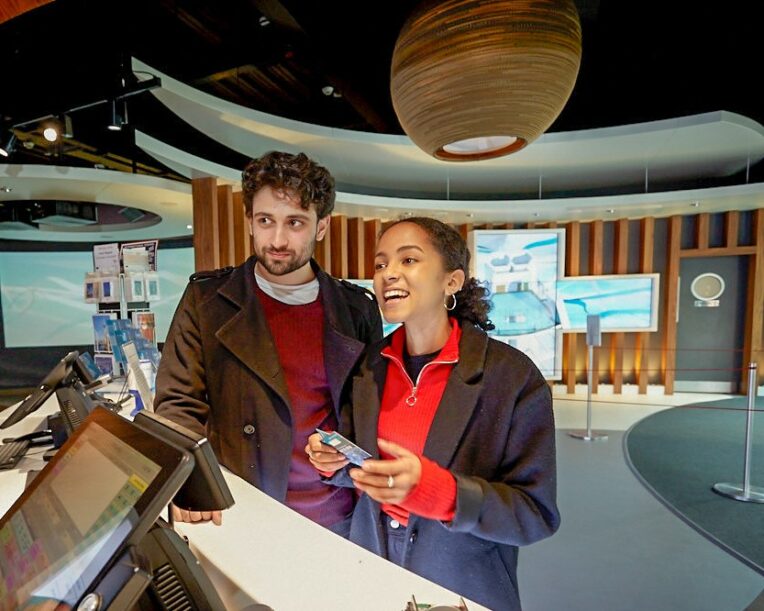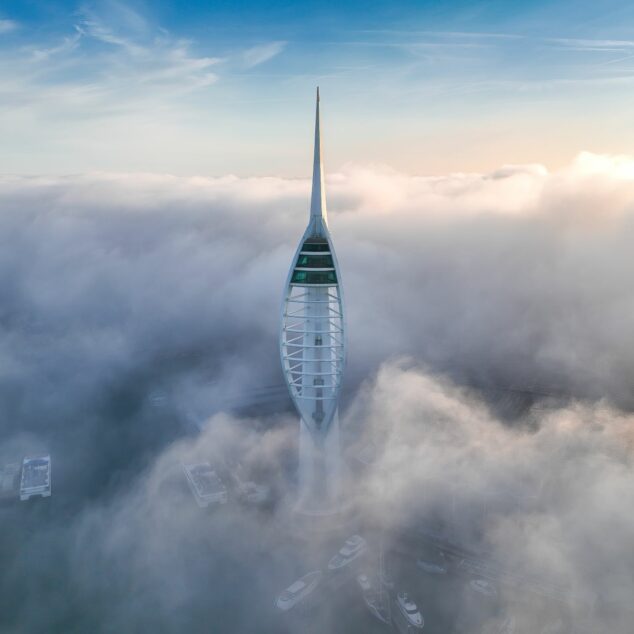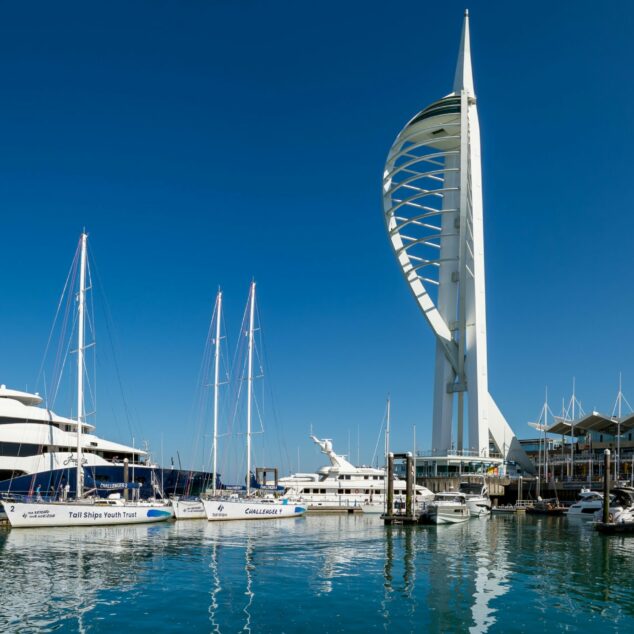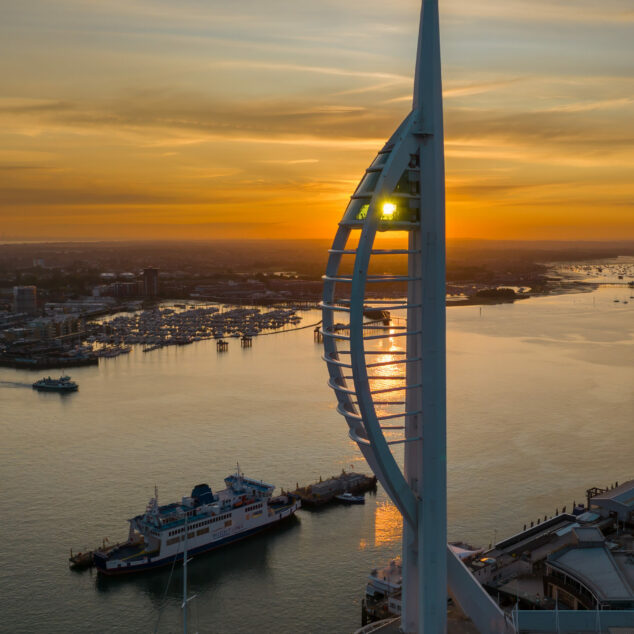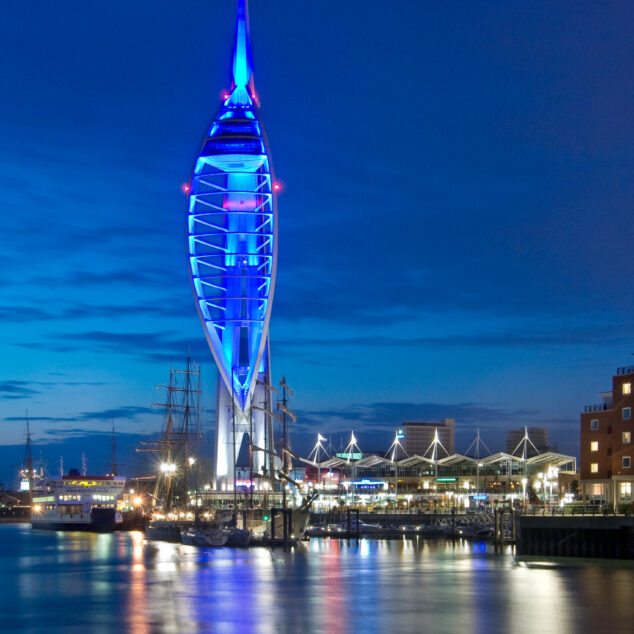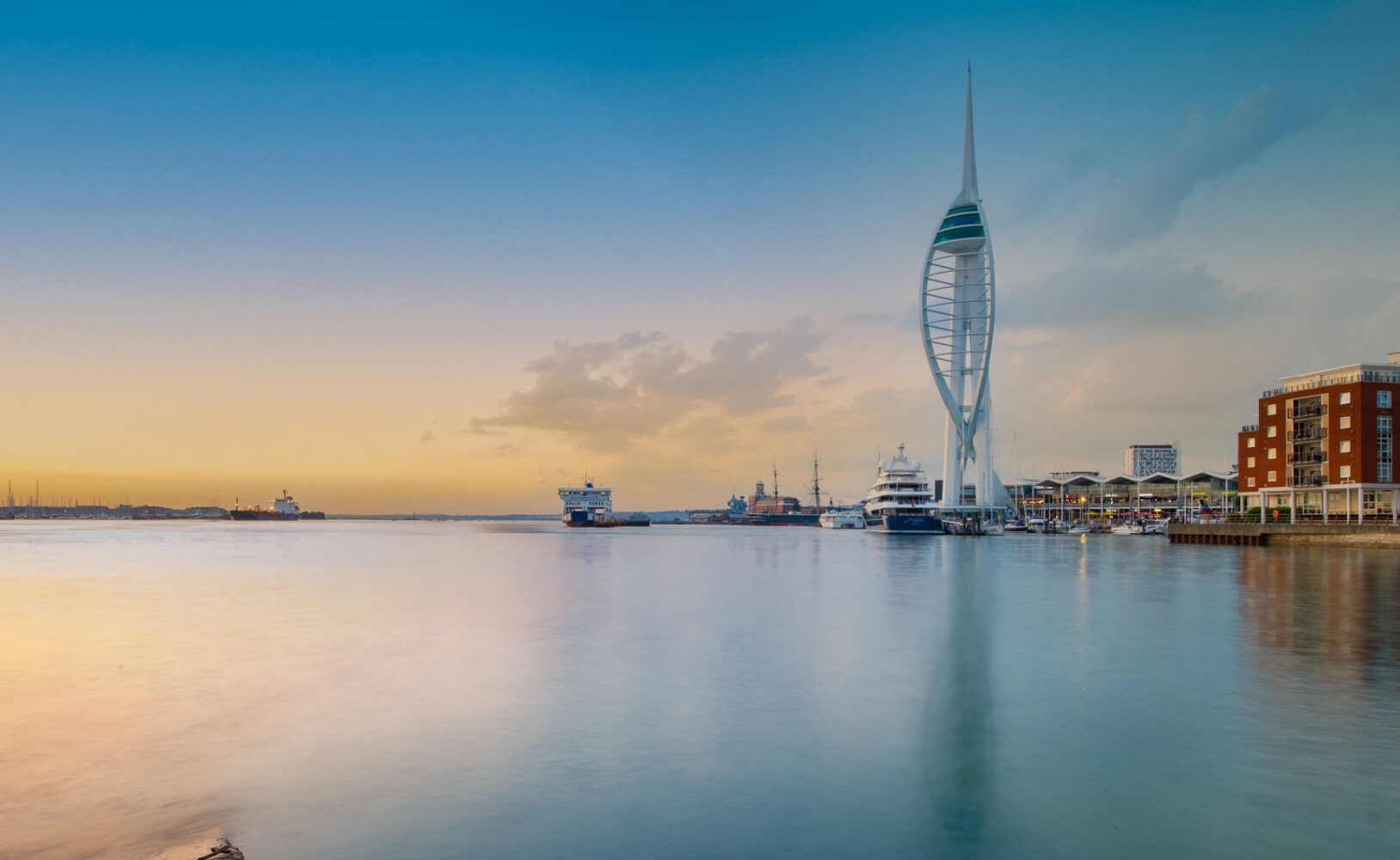
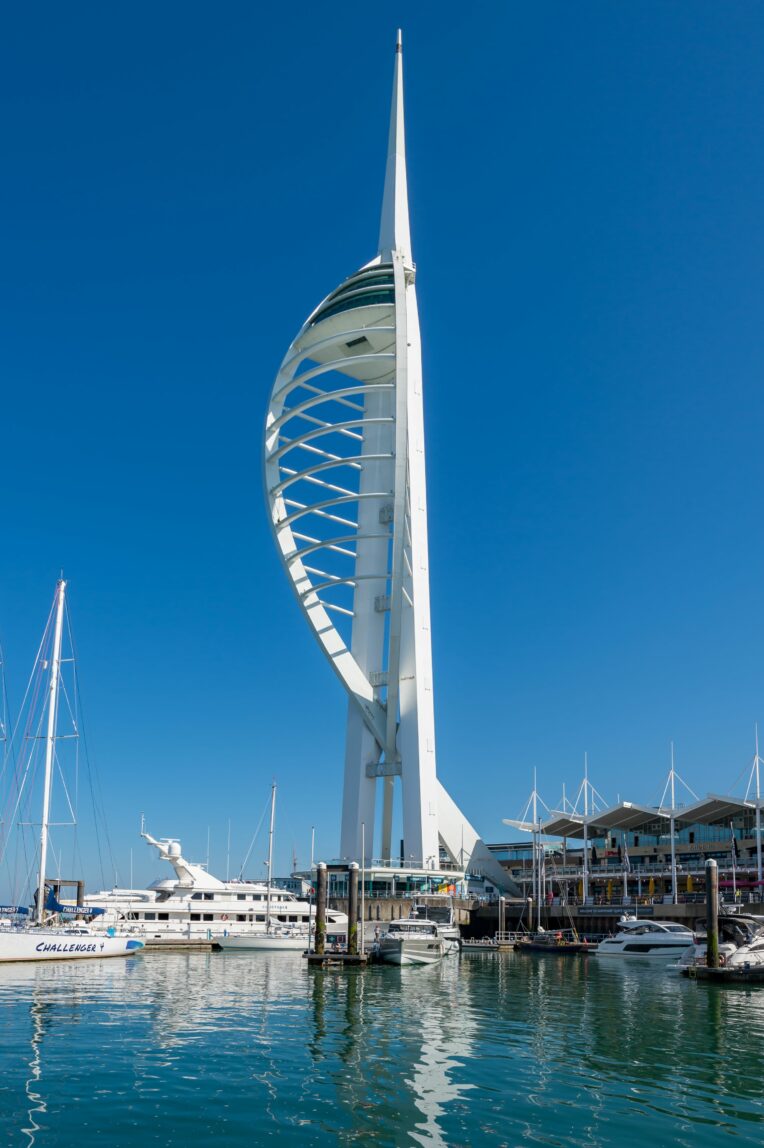
A prestigious Millennium Project, the proposal for the “Millennium Tower” was approved by the Millennium Commission in September 1995. Later that year, Portsmouth City Council published a development brief outlining the broad requirements.
The concept was to create a public and educational facility to celebrate the new Millennium. Public exhibitions and a special edition of Portsmouth City Council’s magazine, Flagship revealed the three design proposals for the City residents to choose from; the Globe, the Spinnaker and the Triple Tower. 60% of people voted for the Spinnaker Tower hence it became the chosen design, reflecting Portsmouth’s unique maritime heritage.
Political, financial, contractual and construction problems delayed the project, and construction of this striking structure actually commenced in November 2001. It wasn’t plain sailing and there were many challenges for the highly dedicated and professional teams of architects, designers, engineers, builders and operators. However, to much acclaim, the Tower finally opened in October 2005.
A proposal for a ‘Millennium Tower’ was approved by the Millennium Commission. The Tower’s structural engineering is extremely complex, its complicated shape and design required many mind bending geometric calculations. Not least, before the Tower was built, the space it occupies now was simply sea!
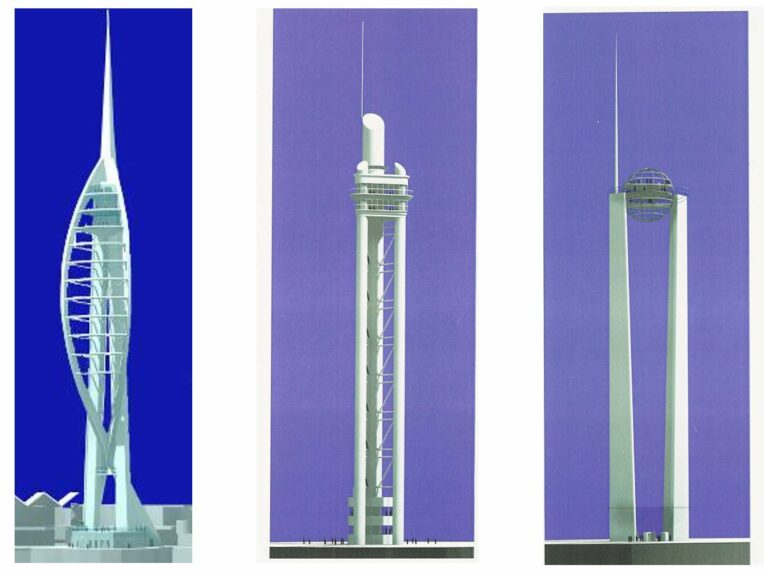
Portsmouth residents voted for their favourite tower design. 60% (30,000 people) voted for the Spinnaker Tower over the Globe and Triple Tower, reflecting Portsmouth’s unique maritime history and the harbour’s place as an international location for yachting. The Tower represents a sail billowing in the wind, a design accomplished by using two large, white, sweeping metal arcs, creating a spinnaker sail design.
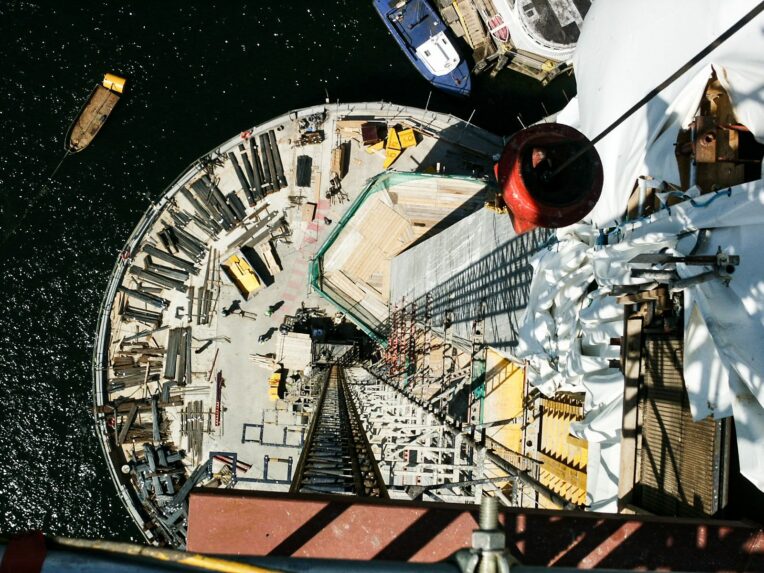
The Tower’s base was constructed first by driving 84 reinforced concrete piles into the sea bed, then building what was described by engineers as a concrete ‘cake tin’ on top. More concrete was pumped into this to form its solid base above the water level. These foundations support the weight of the Tower and provide a buffer against any accidental impact from a ship.
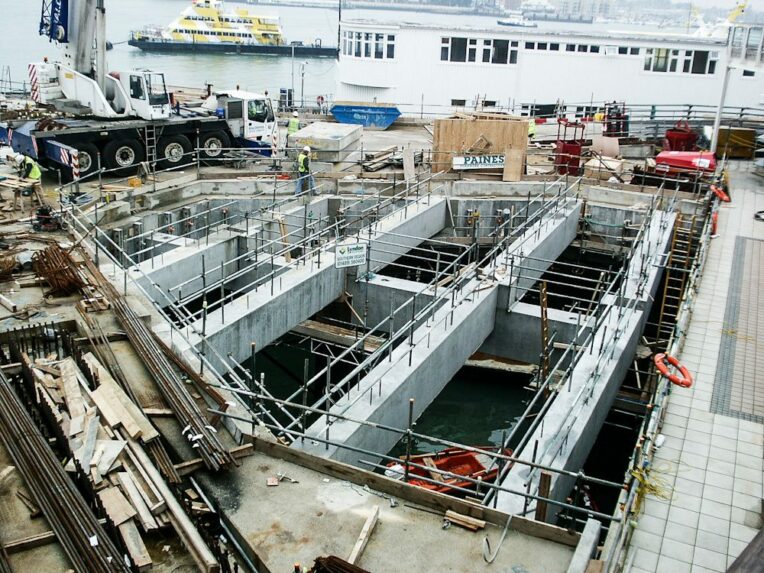
The Tower’s ‘legs’ were constructed from concrete by using a unique process called ‘slip forming’. This involved pouring 11,000 cubic metres of concrete into two shafts, one for each leg. Every 12 – 14 hours, as the concrete dried, the shaft was moved upwards. 75 metres were completed in just four weeks with the entire height of the legs taking three months.
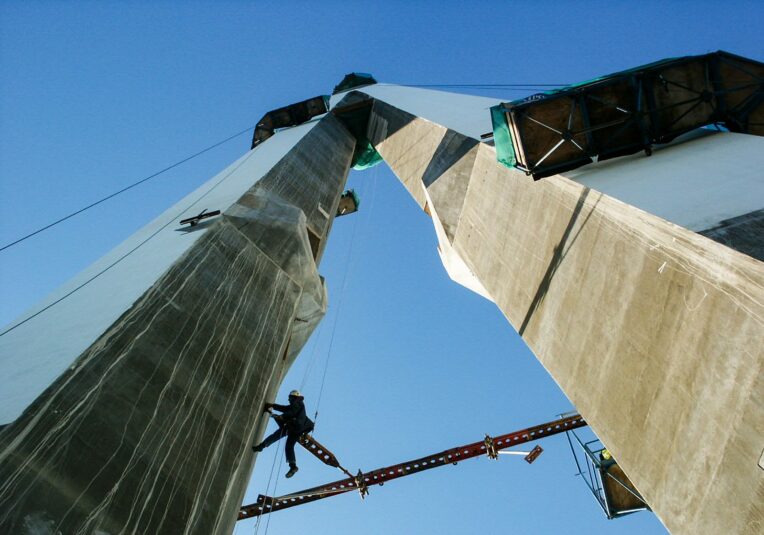
The design of the bows was inspired by the shape of a Spinnaker sail, hence the Tower’s name. The steel structure of the bows was fabricated in Derbyshire, England and was transported in sections by road. This process used approximately 1,200 tonnes of structural steel.
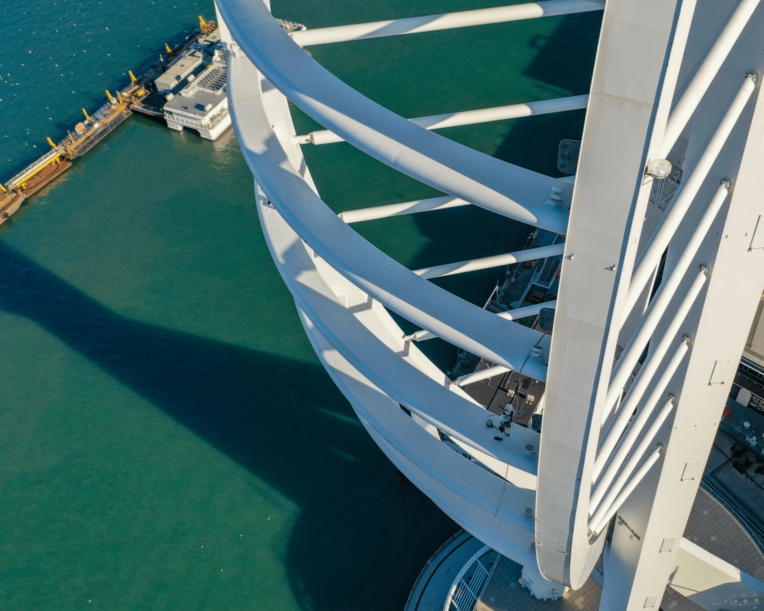
The bottom sections of the bows were lifted into place first. The bows are hollow, like a submarine and contain the lights and part of the fire detection system. There are 50 external lights that can illuminate the Tower as well as 7 aircraft warning lights. Our show lighting is often used for private hire events, weddings and charity or awareness requests.
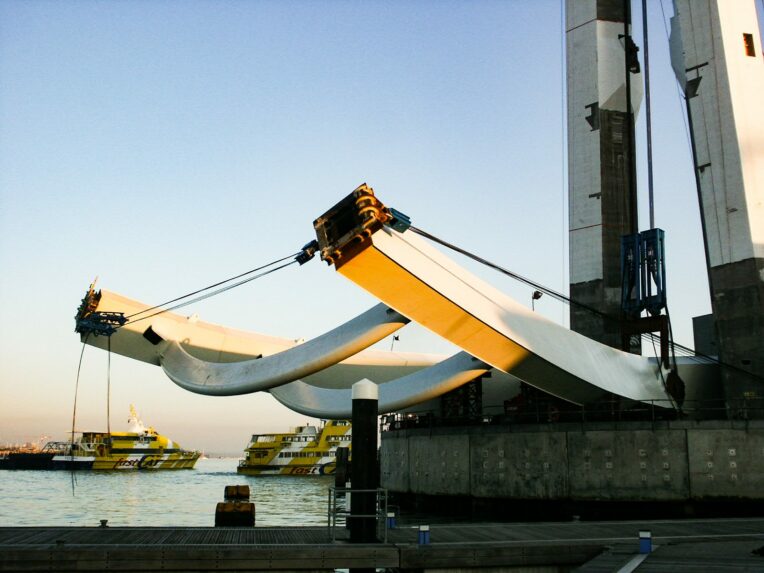
Once the bottom sections of the bows were in place, a crane was used to lift the last 8 metre sections into place, slowly building the bows and ribs upwards over a period of months. There are 570 steps from the base up to View Deck 3, the Sky Garden.
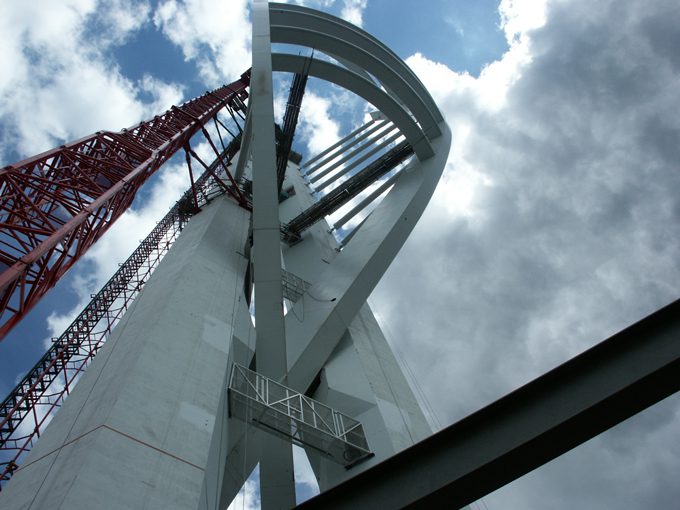
The final dramatic construction phase was the installation of the ‘spire’. Measuring 27 metres, weighing 14 tonnes and partly made of fibreglass, this section was hoisted by one of the tallest tower cranes in the world, with a clearance of less than half a metre! After being lowered into place, it was then bolted to the main structure – the whole process was completed in less than a day!
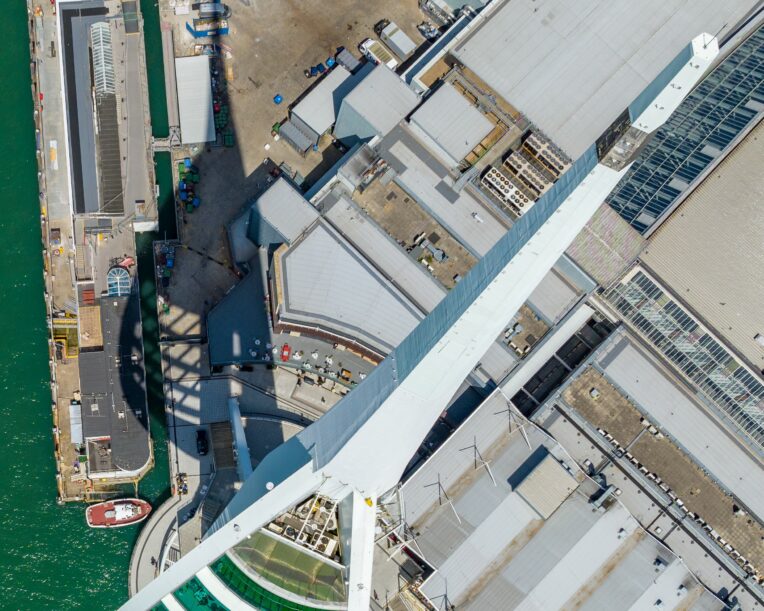
The Tower opened to the public in 2005. The concrete used to create the Tower would fill five and a half Olympic sized swimming pools and the steel used would stretch twice around the Isle of Wight. The structural steel used for the Tower’s bows weighed 1,200 tonnes, the equivalent of 12 blue whales!
